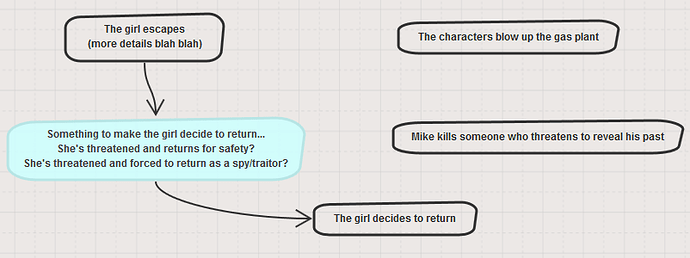Okay, so here’s the kind of thing I get stuck on.
I have a rough draft (well, I’m not sure you can even call it a draft) and the plot is a mess. I’ve been hesitating to change the storyform because I’ve already done so much encoding/illustrating – and have scenes I like based on this – but I just realized if I make it a decision driver I can change the order of the OS signposts in a way that might make more sense. But that does mess up some other signpost orders. If I start changing those, I’m afraid I’ll really get stuck in the weeds (and this is the point where I wonder if Dramatica is doing more harm than good!)
So the first part question is: how much do I need to worry about this? If I have an illustration that was created for one signpost, should I take the time to re-encode it (and potentially rewrite the scenes or fragments), or trust that it will work out based on context?
Here’s my example from RS Signpost 1. The current Signpost is Conceiving. The new Signpost order would have this as Conceptualizing. Here’s what I have for an illustration:
"A good role for an army vet"
In their conversation, Connelly tells Mike that there’s no role for him at the Lifeboat. “We have enough farmers,” he says. They have enough farmers and he has no experience, but there might be a role that Mike could be suited for: security. The idea hits Mike like a ton of bricks; the last thing he wants to do is run security on a pacifist farm, so he rejects Connelly’s offer – but not before Connelly slips him a piece of paper with instructions on how to come the Lifeboat if he changes his mind.
What do you all think?




